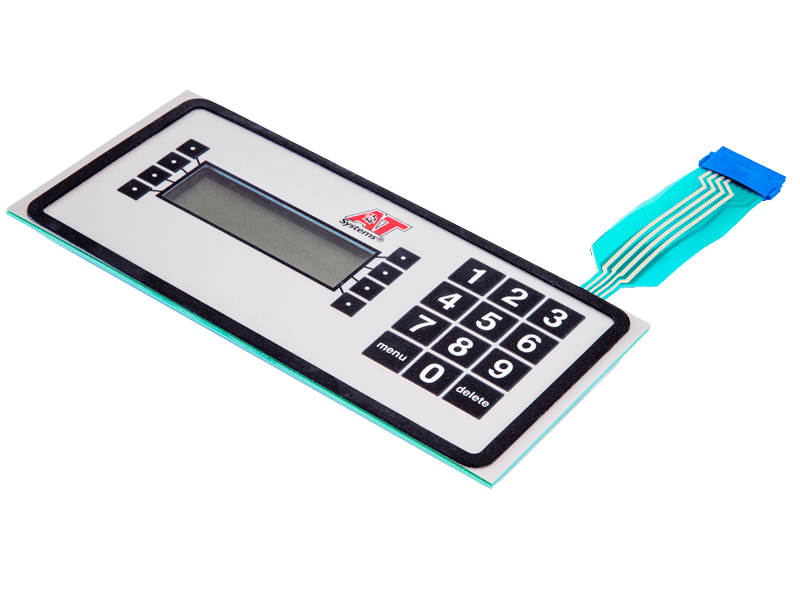Comprehending the Relevance of Membrane Switches in Interface
Membrane switches are essential parts in the style of effective interface, facilitating not only performance yet additionally improving aesthetic allure and user interaction. Their one-of-a-kind functions, such as resistance to environmental elements and customizable designs, make them suitable for a diverse array of applications throughout multiple sectors. As we discover the different benefits and future patterns related to Membrane technology, it comes to be clear that these buttons are greater than simply components; they stand for a merging of advancement and usefulness. The effects of this innovation on user experience deserve checking out better.
What Are Membrane Switches?

The spacer layer, which includes sticky residential or commercial properties, enables the splitting up of the circuit layer from the overlay, making sure that the button continues to be in a non-activated state until pressed. When stress is related to the overlay, it presses the spacer layer, connecting the gap and completing the circuit in the underlying layer. This layout not just minimizes the physical area needed for standard mechanical switches but additionally boosts the resilience of the tool, as Membrane switches are usually immune to dust, dampness, and other environmental factors.
Commonly discovered in applications varying from consumer electronics to clinical devices, Membrane switches are integral to modern-day innovation, offering a efficient and user-friendly user interface that lines up with contemporary design requirements.
Advantages of Membrane Switches
While numerous button innovations exist, Membrane Switches deal unique benefits that make them especially desirable in numerous applications. One of the key benefits of Membrane switches is their small design, which enables space-saving applications in gadgets where realty is limited. Their thin account not just enhances visual allure however additionally facilitates lightweight construction.
An additional significant benefit is their resistance to environmental aspects. Membrane buttons are typically sealed versus wetness, dirt, and impurities, making them suitable for usage popular environments, such as clinical gadgets and industrial devices. This durability expands the life-span of the button, minimizing upkeep prices and enhancing dependability.
Furthermore, Membrane buttons can be customized to fulfill particular style demands, including unique graphics and shades that enhance customer interaction. Their responsive feedback options can likewise be tailored to offer a gratifying customer experience. In addition, Membrane buttons are cost-efficient, especially in high-volume applications, as they can be produced successfully.
Applications in Various Industries

In the customer electronic devices field, Membrane buttons prevail in devices such as microwaves, washing equipments, and push-button controls. Their tactile responses and visual options improve customer experience while supplying a smooth, contemporary appearance. Furthermore, vehicle suppliers use Membrane switches in dashboard controls and infomercial systems, where area is restricted, and individual engagement is critical.
Additionally, the commercial field leverages Membrane buttons in control panels for machinery and tools, allowing for instinctive operation in often rough settings. Their resistance to chemicals and moisture makes certain durability and dependability in these applications. On the whole, the adaptability of Membrane Switches contributes significantly to their extensive use, making them crucial in different technological domain names.
Layout Considerations for Membrane Buttons

When developing Membrane switches, several key factors to consider should be thought about to browse this site make sure optimal performance and customer experience. To start with, the option of materials is vital; selecting durable, high-grade substratums can improve the button's longevity and resistance to environmental variables such as wetness and temperature level changes.
Second of all, the style of the visuals overlay must focus on clarity and ease of use. Symbols and text should be legible, and the layout ought to assist in user-friendly interaction (membrane switches). Additionally, responsive feedback is crucial; integrating a tactile dome or various other mechanisms can enhance the customer experience by supplying physical verification of activation
Another vital element is the button's electric efficiency. Designers should guarantee that the conductive traces are correctly created to reduce resistance and avoid signal interference. This entails examining the required actuation force and making sure compatibility with the electronic elements they will certainly user interface with.

Future Trends in Membrane Technology
As innovation remains to advance, Membrane switches are poised to advance substantially, driven by technologies in products and making methods. One arising pattern is the incorporation of sophisticated materials, such as conductive inks and flexible substrates, which boost resilience and lower the overall weight of Membrane switches. These materials not only boost the tactile response however additionally permit the layout of buttons that can endure harsher ecological problems.
Moreover, the assimilation of touch-sensitive modern technologies is changing standard Membrane Switches into even more interactive individual interfaces. Capacitive touch sensing units embedded within Membrane switch panels can supply a more receptive and user-friendly individual experience, straightening with the growing demand for streamlined, modern-day styles in consumer electronic devices.
Additionally, advancements in discover this printing methods, such as electronic and 3D printing, make it possible for quick prototyping and modification of Membrane switches. This adaptability allows manufacturers to react faster to market needs and consumer preferences.
Last but not least, sustainability is becoming a considerable emphasis, with makers discovering environmentally friendly products and procedures. As these patterns unravel, the future of Membrane innovation guarantees enhanced functionality, aesthetic allure, and environmental responsibility, strengthening their role in innovative user interfaces across numerous sectors.
Conclusion
In conclusion, Membrane Switches represent a crucial part in the layout of user interfaces, incorporating functionality with visual adaptability. Their advantages, including durability and resistance to ecological variables, make them ideal for diverse applications throughout different sectors. Additionally, thoughtful layout factors to consider enhance individual interaction and experience. As innovations in modern technology proceed, the development of Membrane buttons is anticipated to further refine interface, driving technology and boosting usability in an increasingly complicated technological landscape.
Membrane buttons are essential parts in the layout of reliable customer interfaces, helping with not just functionality however also improving aesthetic charm and customer interaction.Membrane Switches offer as a vital element in various customer interfaces, facilitating a smooth communication between users and digital devices.While countless switch technologies exist, Membrane Switches offer unique advantages that make them specifically desirable in numerous applications.Furthermore, Membrane buttons can be personalized websites to meet certain style requirements, incorporating one-of-a-kind graphics and colors that improve user interaction.In verdict, Membrane Switches represent a crucial component in the style of customer interfaces, incorporating capability with aesthetic versatility.